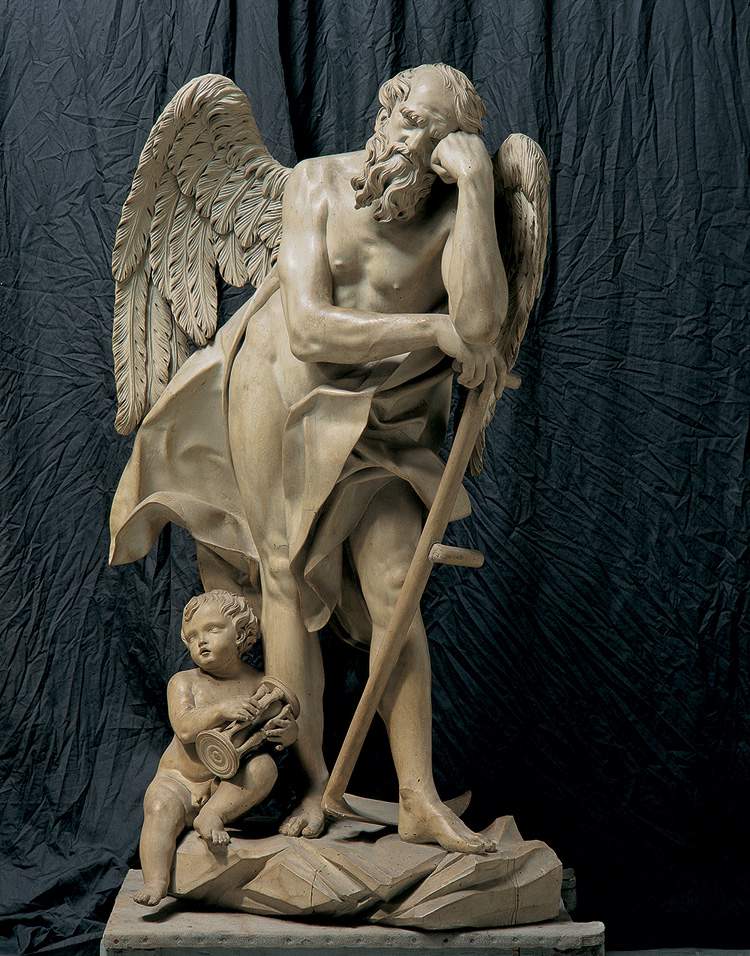Genoa, first monographic exhibition dedicated to Anton Maria Maragliano coming to Palazzo Reale
The great Anton Maria Maragliano (Genoa, 1664 - 1739), a prolific Genoese sculptor active in the late seventeenth and early eighteenth centuries, and an undisputed master of wood sculpture, is the protagonist of the first monographic exhibition dedicated to him, and titled simply Anton Maria Maragliano 1664 - 1739: the appointment is in Genoa, at the Palazzo Reale, from November 10, 2018 to March 10, 2019. Maragliano, one of the greatest artists of his time, had a sort of “monopoly” on wooden sculpture in Liguria: a situation that forced him to give his workshop an articulated entrepreneurial structure. And it was precisely his workshop in Strada Giulia in Genoa that welcomed two generations of pupils, giving rise to that phenomenon of popularization of the master’s language that represents the most fascinating, albeit problematic, aspect of the approach to the sculptor: and the pupils of the pupils pursued this popularization beyond the end of the century. The exhibition, curated by Daniele Sanguineti and set up in the spaces of the Teatro del Falcone, will have a path with a dual approach: on the one hand, the chronologicaliter, with the cultural models of reference, the beginnings, the workshop and the progressive intervention of the pupils; on the other hand, a series of thematic sections, articulated in suggestive aggregations of works by iconography or scenographic impact.
Documents, engravings and watercolors will evoke Maragliano’s places and recount his apprenticeship as well as the environments that, over the years, housed his workspace. This is followed by a section devoted to artistic precedents, built with the works of the artists on whom the young Maragliano trained, from Giuseppe Arata and Giovanni Battista Agnesi to Giovanni Battista Bissoni and Marco Antonio Poggio. The protagonist of this part of the exhibition will be the magnificent St. Michael Archangel of Celle Ligure, requested from Maragliano in 1694, and inescapable testimony to the new, delicate dynamism infused into the wooden sculptures, capable of translating into the three-dimensionality of the artifact the engaging and powerfully Baroque grace proper to coeval painting. Rapallo’s case for the disciplinants, requested in the 1700s, reveals how much the Bernini lesson, filtered in the city by the presence in the 1780s of Pierre Puget, an artist who had intensely looked up to Bernini, was another essential updating pole for the talented artist, who demonstrated, on more than one occasion, that he understood and assimilated it well.
Also planned is an in-depth study of the working practice, from the manipulation of clay models to the collaboration with painters, especially those of the Piola household: the aim is to make the ideational project comprehensible in the entirety of its process. Again, the progressive juxtaposition of a number of Crucifixes, large or small, chapel, high altar or processional, shows the substantial renewal conferred by Maragliano on iconography until a replicable cliché was obtained by his pupils. A series of spectacular Madonnas, seated on thrones, and an extraordinary processional case, namely the St. Anthony Abbot contemplates the death of St. Paul the Hermit, now pertaining to the confraternity of the same name in Mele, restore the theatrical values of Maragliano’s compositions, for which the biographer Carlo Giuseppe Ratti, reporting the judgment of the people, wrote: “...they have all the air of Paradise.” Alongside small-format works that will allow visitors to fully appreciate the master’s technical expertise, there will also be a display of highly refined objects, both sacred and profane, commissioned by noble families for their private collections. The itinerary concludes with an allusion to the complex management of the Maraglianesque legacy, thanks to the presence of some pieces made by his main students.
Not just exhibition: given the high presence of Anton Maria Maragliano’s works in Genoa, there will be a sort of route through his places in the city, that is, through the sites where it is possible to find Maragliano’s works in their original locations, such as the Pietà of St. Matthew’s, the Dolenti of the Squarciafico Chapel in Santa Maria delle Vigne, the Stigmata of St. Francis of the Holy Father and the San Pasquale of the Santissima Annunziata, all works that could not be moved because of their complexity. Accompanying the exhibition is an important scholarly catalog with essays and fact sheets on the works on display and by a day of studies(Maragliano: Studies and Restorations), organized with the involvement of the University of Genoa and the Soprintendenza Archeologia, Belle Arti e Paesaggio for the metropolitan city of Genoa and the provinces of Imperia, La Spezia and Savona, in which specific reflections will be addressed and the outcomes of recent restorations (related to the Bando San Paolo aimed at works by Maragliano and Maraglianeschi in the area) will be presented.
Pictured: Anton Maria Maragliano, The Time, preserved at the Museum of St. Augustine in Genoa
 |
| Genoa, first monographic exhibition dedicated to Anton Maria Maragliano coming to Palazzo Reale |
Warning: the translation into English of the original Italian article was created using automatic tools. We undertake to review all articles, but we do not guarantee the total absence of inaccuracies in the translation due to the program. You can find the original by clicking on the ITA button. If you find any mistake,please contact us.




























